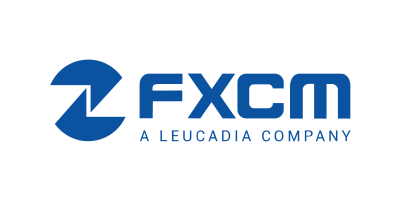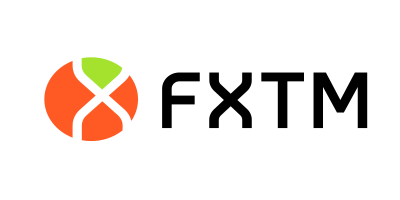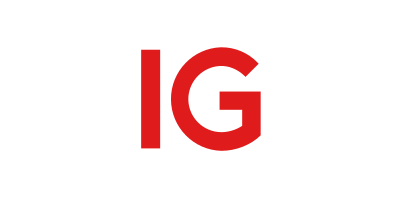Before operating in the markets there are certain basic Forex terms that we must know. Although the foreign exchange market has gained great popularity since the advent of the Internet, this does not mean that is easy to operate in it. In fact, it can become extremely intimidating and complicated when you start from scratch.
As in any new skill that is learned, it is also necessary to learn its terminology. The mistake of many beginners lies in ignorance and before starting to trade Forex it is a good idea to know the simplest definitions as these will be the starting point that will help us understand the rest as we progress in our training.
Here are 10 basic Forex terms to better understand the market and have a better chance of success.
1. Balance
The balance is the amount of money in your trading account taking into account deposits, withdrawals and all transactions concluded or closed. It does not take into account pending transactions, which will be added or subtracted when they are closed depending on whether it is with a profit or a loss.
2. Equity
The equity (Fund) is the sum of the balance and the profit or loss of the open positions. Its formula is:
Equity = Balance + Profit and Loss
When you have open orders in the trading account, the balance will not change and will remain fixed, but the equity will float according to the profit or loss of your open orders. In contrast, if you do not have an open position there will be no floating profit or loss, so your equity and account balance will be equal.
3. Margin
The amount of money needed to cover your possible losses when opening a trade is called margin. This is calculated based on leverage and is an amount of money that is used as a guarantee for possible losses. This money is locked up until leveraged positions are closed and then the money is returned by the broker. The formula is:
Margin = (price x volume) / leverage
The maximum margins are usually expressed in percentages, which in turn vary depending on the asset and broker. The more volatile the assets, the higher levels of margins will be required.
Here are some of the most common spreads and their relationship to leverage:
| Margin | Leverage |
| 10% | 10:1 |
| 5% | 20:1 |
| 3% | 33:1 |
| 2% | 50:1 |
| 1% | 100:1 |
| 0.50% | 200:1 |
| 0.25% | 400:1 |
Do not allow yourself to feel intimidated by numbers, percentages and formulas, it is very simple and as in almost everything, nothing better to understand it than an example:
Suppose you want to buy EUR/USD $1,000.00 with a leverage of 100:1 and the price is 1.20. To open this position the broker requires a margin of 1%. Then it would be: 1.20*1000/100. This results in $12 being the retained account margin and the remaining $988 is put in by the broker.
4. Free Margin
Free margin is the amount of money available to open new trades and is equal to equity minus margin used on open positions. The formula would be as follows:
Free Margin = Equity – Margin
As long as you have no open orders in your trading account, your account balance, free margin and equity will be the same. In the following image you can see an example of this in the Metatrader platform.
5. Margin Call
It is a notification sent to the investor or trader and occurs when the margin falls below the minimum required by the broker. To solve this there are only two possibilities. Funding the trading account in the hope that the market will move in our favor or closing open positions to free up margin.
If the investor does not respond to the margin call and continues to lose money, the broker may begin to close the positions when they reach the closing or stop out level. Forex brokers usually monitor account balances on an ongoing basis to prevent them from reaching the point of requiring a margin call.
6. Leverage
Leverage allows you to operate with more money than you have in the account. It generally differs between different brokers and their account types. This can vary from 10:1 to 400:1, or even more. The higher the ratio, the greater your potential profit or loss.
Trading foreign exchange without depositing the full transaction amount is possible because only differences are settled. In other words, the currencies bought or sold are not transferred, but only the profits or losses generated by our operations in the market are received. This is the only way small investors can participate in a market that was originally designed only for banks and financial institutions with lots of $250,000.
An investor can also customize the leverage according to their way of operating, of course always below the maximum allowed. Those who are more risk averse are comfortable using leverages of 10:1 or 20:1. On the other hand operators with a higher tolerance for risk can use 400:1 or 500:1. In relation to the latter, the foreign exchange market is perfectly adapted to them, offering the highest leverage available for any market. However, your broker will set a maximum leverage that you cannot exceed.
Keep in mind that if the leverage is very high, your margin limit would be very high. Consequently, this gives you the freedom to open large positions, but it can also make you lose a lot of money if you are not knowledgeable enough. Therefore, without proper risk management and Forex experience, a high degree of leverage can lead to huge losses if the market turn against us.
Let’s see an example to better understand what it is about: With a leverage of 500: 1 you can buy a lot of $100,000.00 with only $200 USD. But at the same time, if the market moves 20 PIPs against you, something very easy in the foreign exchange market in a short time, you would be losing $200 USD without counting the spread.
Without a doubt, controlling the risk is very important. In that sense, FOREX traders can limit their own leverage through the size of the lot to be traded and thus control the portion of the account that they put at risk.
7. Stop Out Level
It is the point where if your margin level falls below it, the system starts closing your losing positions. The biggest losing position will be closed first and if this helps the margin level to exceed the stop level no more positions will be closed. Otherwise, the system will close the next losing position and so on until it is above the allowed margin level, usually 100%.
8. Margin Call
The margin level is the ratio of equity to margin. It is a risk indicator that helps you know how much free margin is available to open new positions or maintain existing ones. This is represented in percent and the formula to calculate it is:
Margin level = (Equity/Margin)*100
When you have losing positions your margin level goes down and when you have winning positions your margin level goes up.
9. Level Margin Call
Margin Call Level is the limit where if your level falls below it you will not be able to take any new positions. This is set by the broker and varies from broker to broker, but is usually set to 100%.
When your margin level drops to 100%, used margin and equity are equal. Therefore, there is no free margin, neither to open new operations, nor to compensate the losses of existing ones. In the following table we can see several examples with different leverage, the shaded row corresponds to the case that is at the 100% margin limit.
| LEVERAGE | EQUITY | MARGIN | FREE MARGIN | MARGIN LEVEL |
| 20:1 | 5789.47 | 5789.47 | 0.00 | 100 % |
| 30:1 | 5789.47 | 3859.65 | 1930.00 | 150 % |
| 100:1 | 5789.47 | 1157.89 | 4632.00 | 500 % |
At this level of margin cap of 100% we could receive the dreaded margin call.
10. Lots
Currencies are regularly traded in groups of units called lots. Similarly, in the minority market a standard lot is always made up of 100,000 units, regardless of the base currency of the pair. However, most brokers allow investors to trade in fractional lots. These are the so-called mini lots consisting of 10,000 units (0.1 of a standard lot) and micro lots of 1,000 units (0.01 of a standard lot). This is a great advantage that retail Forex brokers offer to the small investor. Thus, in this way they can better adapt the monetary management to their preference.
In the table below we can see the relationship between lot types, leverage and margin.
| LOT | LEVERAGE | MARGIN |
| 1,000.00 | 10:1 | 100.00 |
| 1,000.00 | 50:1 | 20.00 |
| 1,000.00 | 100:1 | 10.00 |
| 10,000.00 | 10:1 | 1,000.00 |
| 10,000.00 | 50:1 | 200.00 |
| 10,000.00 | 100:1 | 100.00 |
| 100,000.00 | 10:1 | 10,000.00 |
| 100,000.00 | 50:1 | 2,000.00 |
| 100,000.00 | 100:1 | 1,000.00 |
Unquestionable to be successful in the forex market we need to delve into many aspects. But without a doubt, within them we have these 10 basic Forex terms, which we must master due to the great importance they represent for daily operations. Review them, practice and make sure you understand what they represent and how they work before you venture into investing.
- What is FOREX?Do you want to know what Forex is? An approach to the subject with detailed and useful information on its operation and main characteristics.
- Types of brokersThere are several types of Forex brokers and learning about them can have a huge impact on your Forex trading experience.
- 10 Basic Forex Terms We Should Know.There are certain basic Forex terms that we must know before operating in the markets and thus have a greater chance of success.
- How to choose a Forex broker?In this article we will show you how to choose a Forex broker, but not just any one, but one that suits your needs.
- Regulation in the Forex marketRegulation in the Forex market is one of the main criteria that must be analyzed before choosing a broker.




